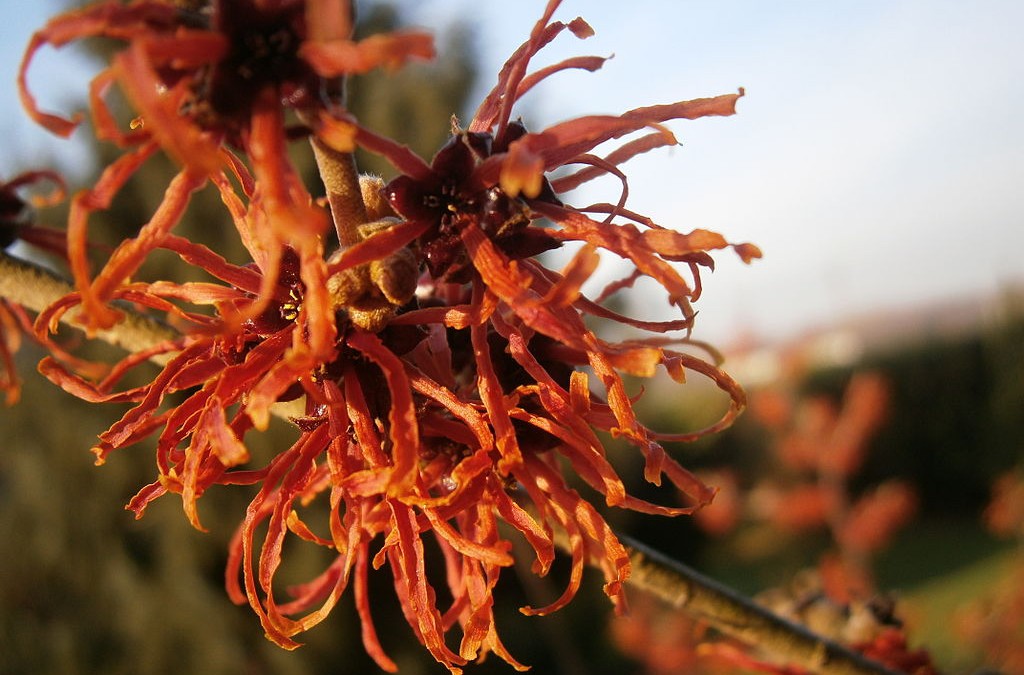The other day, while walking down the street, I witnessed a fabulous show that other people seemed to simply ignore. There, in a small town garden, a Viburnum x bodnantese ‘Dawn’ was fully covered with pale pink flowers. I approached the shrub to enjoy its sweet perfume…
While the rest of the garden is at sleep, these shrubs always impress me with their capacity to withstand the harshest elements and offer us such a joyful moment. Of course, they have nothing to do with a showier spring or summer flowering ones. They are all about delicacy. Moreover, these shrubs are often (highly) scented, a way to attract the rare pollinators present at this time of year.
The Viburnum x bodnantese ‘Dawn’ is certainly the most famous example, found in many gardens. Personally, I prefer the cultivar V. x b. ‘Deben’ that has white flowers. In the family of viburnums, we can also mention the evergreen Viburnum tinus or Viburnum farreri, one of the parents of V. x bodnantese.
The Chimonanthus praecox is another winter-flowering shrub, that produces waxy yellow flowers with a maroon base and a particular perfume that people describe as spicy. It is worth looking for the variety C. p. var luteus, whose yellow coloring is softer.
I adore the perfume of Lonicera x purpusii, whose cultivar ‘Winter Beauty’ is an excellent selection. Unfortunately, it makes quite an unruly shrub. It is thus better placed in the background, below other deciduous shrubs that will hide it during the growing season.
This is unfortunately a common problem among these shrubs. They are included in a garden for their winter interest, but one has to live with their dull foliage or less gracious appearance the rest of the year. Their successful use lies in their placing, sufficiently close to a path where they can be enjoyed in winter whilst in a less dominating position where they can easily be forgotten.
A notable exception to this rule is the family of witch hazels. These shrubs have both a good form and beautiful autumn colors. In winter, they are draped by tiny star-shaped flowers, which are incredibly resilient despite their delicate appearance. There exists other colors besides the ubiquitous yellow, notably rusty orange of Hamamelis x intermedia ‘Jelena’ or red of H. x i. ‘Diane’. They should ideally be placed in such a way that the low winter light backlights them; the whole shrub then seems to glow. Last but not least, let me mention the pleasure of cutting a couple of sprigs – be careful not to ruin the shrub shape – that will perfume a room.


Recent Comments